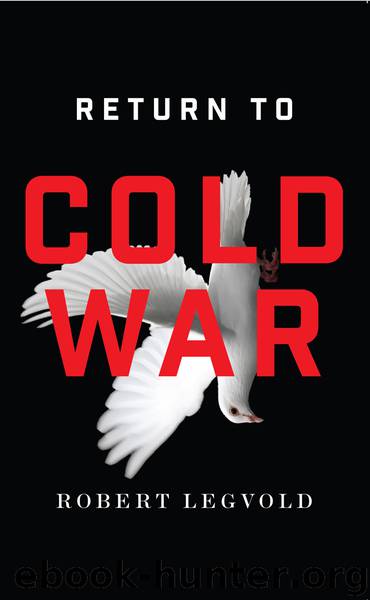Return to Cold War by Robert Legvold

Author:Robert Legvold
Language: eng
Format: epub
ISBN: 9781509501922
Publisher: Wiley
Published: 2016-04-04T00:00:00+00:00
Stages
When Boris Yeltsin returned to Washington four months after his initial meeting with Bush, he was there to lobby Congress and to sign a charter for American–Russian partnership and friendship. To call the document fulsome would be an impressive understatement, but this too was an artifact of the expectations guiding US and Russian leaders at the time – both real and rote. The reference to shared ideals of democracy and commitment to the rule of law, human rights, and fundamental freedoms may have been an honest aspiration on Yeltsin’s part. It could only have been a hope on Bush’s part. The reverse was probably true of the passage evoking their special responsibility as permanent members of the UN Security Council for maintaining international peace, and one can only guess what degree of conviction lay behind the loftier claim that together they would build “a democratic peace that unites the entire community of democratic nations” (White House Office of the Press Secretary, 1992).
Doubtless the soaring spirit of their declaration reflected a genuine sense of the grand possibilities opened by the revolutionary events that had just taken place. For Yeltsin, however, seizing the moment to give this vision concrete form was not his immediate priority. He and his foreign minister, Andrei Kozyrev, had decided that their country’s fate lay with the West, and, to the condemnation of critics back home, they had embraced a “pro-Atlanticist” orientation. But this had far more to do with securing US support for the reform they were struggling to introduce in Russia than with co-managing a safer and more democratic world. Even the boldest actions Yeltsin proposed on the occasion – such as a steep cut in nuclear warheads to 2,500 for each country (from more than 9,000), the elimination of MIRV missiles, and a global missile defense system – were inspired more by an urgent need to reduce the country’s defense burden than a deep desire to reduce the risk of nuclear war.
For the Bush administration, now convinced of Yeltsin’s democratic bona fides, his success was seen as important, but it was an election year, the US economy was in recession, and there was resistance in both the administration and Congress to investing heavily in his success. Historic as the opportunity might have been, key figures in the administration, including the president, focused more on the risks entailed in the momentous but chaotic change underway. First among these was what was to happen to the vast Soviet nuclear arsenal now spread across four newly independent, but shaky states. The bulk of these holdings remained in Russia, but the numbers elsewhere were formidable. In Kazakhstan, for example, the quantity of nuclear warheads nearly totaled those held today by the United States. The other near-term priority was to help cushion the pain that the collapse was inflicting on the Russian population, lest it lead to public unrest threatening Yeltsin’s reforms. So, food aid to avert feared starvation over the 1991–2 winter flowed, and so did advice from a
Download
This site does not store any files on its server. We only index and link to content provided by other sites. Please contact the content providers to delete copyright contents if any and email us, we'll remove relevant links or contents immediately.
| Arms Control | Diplomacy |
| Security | Trades & Tariffs |
| Treaties | African |
| Asian | Australian & Oceanian |
| Canadian | Caribbean & Latin American |
| European | Middle Eastern |
| Russian & Former Soviet Union |
The Secret History by Donna Tartt(18190)
The Social Justice Warrior Handbook by Lisa De Pasquale(11957)
Thirteen Reasons Why by Jay Asher(8461)
This Is How You Lose Her by Junot Diaz(6452)
Weapons of Math Destruction by Cathy O'Neil(5842)
Zero to One by Peter Thiel(5498)
Beartown by Fredrik Backman(5369)
The Myth of the Strong Leader by Archie Brown(5243)
The Fire Next Time by James Baldwin(5024)
How Democracies Die by Steven Levitsky & Daniel Ziblatt(4966)
Promise Me, Dad by Joe Biden(4912)
Stone's Rules by Roger Stone(4867)
100 Deadly Skills by Clint Emerson(4695)
A Higher Loyalty: Truth, Lies, and Leadership by James Comey(4558)
Rise and Kill First by Ronen Bergman(4549)
Secrecy World by Jake Bernstein(4395)
The David Icke Guide to the Global Conspiracy (and how to end it) by David Icke(4386)
The Farm by Tom Rob Smith(4329)
The Doomsday Machine by Daniel Ellsberg(4250)
